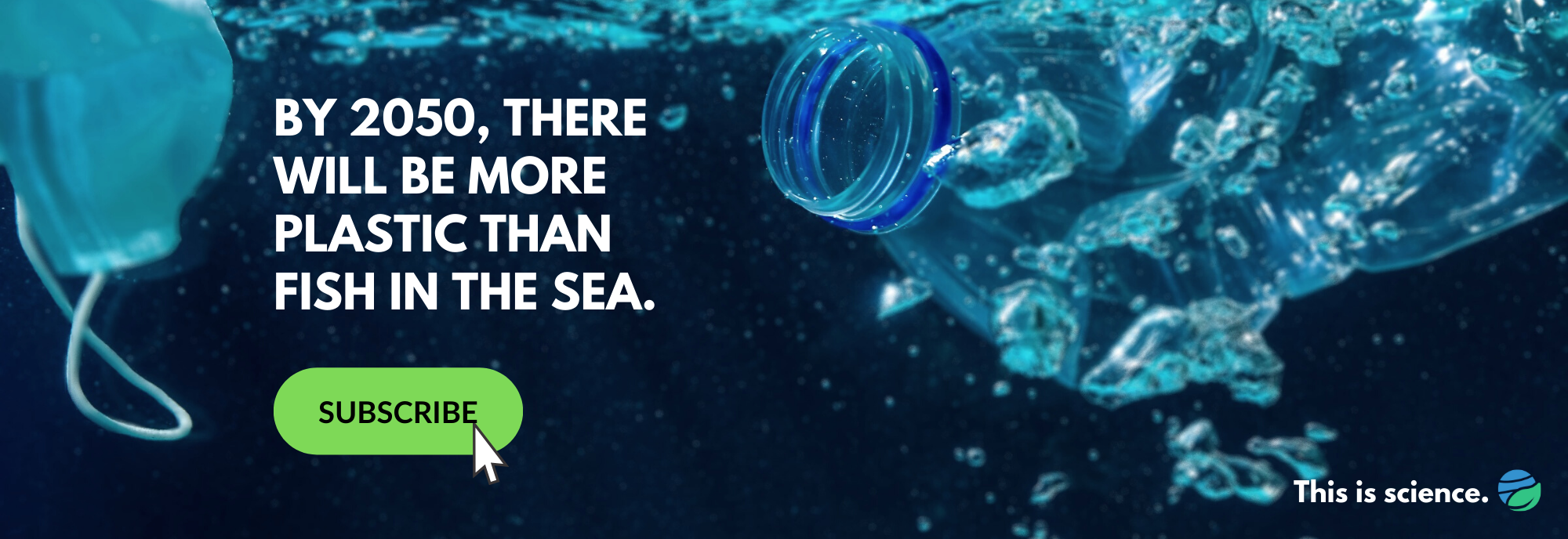Nearly all people have endocrine-disrupting chemicals in their bodies.
Here’s what these chemicals are and how we can avoid exposure to them.
What is an endocrine-disrupting chemical?

Researchers Ana Soto, Carlos Sonnenschein and Silva Krause looking at mammary glands from a BPA experiment at Tufts University.
Credit: Ana Soto
Endocrine-disrupting chemicals, also known as EDCs, are natural or human-made substances that interfere with the healthy functioning of the body’s endocrine system.
The endocrine system is made up of glands throughout the body, along with the hormones that these glands produce and receptors that respond to the hormones. Endocrine glands include the pituitary, thymus, pancreas and adrenals. Hormones act like messengers, traveling through the body to deliver instructions that control biological processes ranging from growth and development to sleep, digestion and childbirth.
Humans have more than 50 hormones. These include estrogen and testosterone, which help to control sexual development, as well as the “feel good” hormones serotonin, endorphins and oxytocin, which regulate mood, along with many other processes.
Endocrine-disrupting chemicals change how the endocrine system works. Some EDCs are chemically similar to our hormones and mimic their effects in the body. Others block the action of hormones, increase or decrease their levels, or affect how the body responds.
Because the endocrine system is extremely sensitive, endocrine disruptors can be hazardous in tiny amounts, such as one part per trillion — the equivalent of one drop of water in 20 Olympic-sized swimming pools. Some of these substances, such as lead, are so harmful that there is no known level of exposure that is not considered dangerous to some degree.
According to one estimate, there are roughly 1,000 endocrine disrupting chemicals currently in use. However, this number is likely an undercount. There are hundreds of thousands of synthetic chemicals, and only a small percentage have been assessed for their effects on the endocrine system.Where are endocrine-disrupting chemicals found?
EDCs include human-made chemicals, such as bisphenol-A (BPA) and PCBs, as well as lead, cadmium and other toxic heavy metals. These substances are found in thousands of household and industrial products: pesticides and herbicides, paints and sealants, plastics, cookware, fragrances, antibacterial soaps, cosmetics and personal care products, electronics, medical supplies, clothing and furniture.
Endocrine-disrupting chemicals have many uses. Some, like BPA, are the basic building blocks of plastics. As such, they are called monomers. When stitched together in a chain, the chain is called a polymer, which is plastic. Others, like some additives, are used to give plastics special properties such as flexibility and resistance to shattering. These include phthalates, UV stabilizers and BPA. PFAS — per- and polyfluoroalkyl substances, commonly known as “forever chemicals” for their persistence in our bodies and the environment — are used in a variety of water- and grease-resistant products. These include food packaging, nonstick cookware, stain-resistant clothing and firefighting foam. Flame retardants are found in upholstered furniture, baby products, car seats and other goods to slow the spread of fire.
Other EDCs are not manufactured on purpose, but are unwanted byproducts from various industrial processes. Dioxins are generated during metal smelting, pesticide production, waste incineration and bleaching pulp for paper manufacturing. The burning of fuels — including coal, oil and wood — also generates dioxins.
Some endocrine disruptors come from natural sources, such as the phytoestrogens found in soybeans, oats and other plants. Phytoestrogens mimic or alter the effects of estrogen. Studies about the health effects of these plant compounds reveal different types of effects. In some circumstances they are harmful, in others positive or neutral. And experts say that eating soy provides many beneficial nutrients and can be safely eaten several times a week — and probably more.
How do endocrine-disrupting chemicals enter our bodies?

Endocrine-disrupting chemicals have many uses. Some, like BPA, are the basic building blocks of plastics.
Credit: Unsplash+
We’re exposed to EDCs when we consume contaminated food and water, handle materials that contain these chemicals or inhale polluted air and household dust. These toxic substances can also be passed to a fetus through the placenta or to an infant through breast milk.
Some types of endocrine disruptors build up in fat and other tissues, remaining there for years or decades. Scientific studies have consistently shown that nearly all people have endocrine disrupting chemicals in their bodies.What are the health risks of endocrine-disrupting chemicals?

We’re exposed to EDCs when we consume contaminated food and water — and these toxic substances can also be passed to a fetus through the placenta or to an infant through breast milk.
Credit: Levi Meir Clancy/Unsplash+
Because hormones regulate almost every process in our bodies, EDCs can have a vast range of health effects.
For the reproductive system, these harms include:
- Genital malformations
- Cancers of the reproductive organs
- Early female puberty
- Early menopause
- Lowered sperm counts
- Infertility
- Miscarriage
- Low birth weights
These chemicals are also linked to many inflammatory and chronic diseases, including:
- Obesity and other forms of metabolic dysfunction
- Diabetes
- Cardiovascular disease
- Hormone-sensitive cancers
- Autoimmune disorders
- Allergies and asthma
EDCs can also harm the brain and nervous system. Prenatal and childhood exposure is linked to:
- Lower IQ
- Memory and attention deficits
- Developmental delays
- Depression
- Neurodegenerative disorders such as Parkinson’s
EDCs can also alter the DNA in our cells. Changes to germ cells — eggs and sperm — may be permanent and can harm the health of future generations. Women exposed to the pesticide DDT, for example, have granddaughters with higher body mass and earlier age of first menstruation.
Research into the health effects of EDCs is far from complete. Many big questions remain. Every day, the average person is exposed to hundreds or thousands of different kinds of chemicals in unknown quantities. How many of these affect our endocrine system? Do these chemicals interact with one another and create new hazards? And how do endocrine disruptors interact with other health risk factors such as genetics, age and diet? We still don’t know.Who is most at risk from endocrine-disrupting chemicals?

EDCs can alter the DNA in our cells. Changes to germ cells — eggs and sperm — may be permanent and can harm the health of future generations.
Credit: Jonathan Borba/Unsplash
Because hormones regulate growth and development, fetuses, infants and young children face particular dangers from EDCs.
Other at-risk populations include:
- People who manufacture or interact with these chemicals, including chemical plant employees, construction workers and firefighters.
- Farm workers and other populations regularly exposed to pesticides and herbicides.
- Poor communities and communities of color, who are more likely to live in heavily polluted areas or near chemical manufacturing facilities. These groups are less likely to have access to adequate healthcare.
- People with compromised immune systems or endocrine-sensitive diseases.
How do endocrine disruptors affect wildlife?
Endocrine disruptors cause similar harms to animals as they do to people. In the 1940s, 1950s and 1960s, widespread use of the pesticide DDT triggered catastrophic declines in many bird-of-prey species, like bald eagles. Endocrine-disrupting pesticides cause sexual abnormalities and immune disorders in mammals, alligators, frogs, fish, birds and mollusks. Half of all killer whale populations are in danger of extinction from exposure to high levels of pesticides, flame retardants and other EDCs in their prey and habitats.
What is the industry’s role in exposing us to endocrine-disrupting chemicals?

In 2005, Patagonia cleared all 20,000+ Nalgene water bottles off their retail shelves out of concern about BPA.
Credit: Alex Smith/flickr
In several high-profile cases, corporations have been aware of the health dangers of their products and have hidden or lied about these risks. The chemical manufacturers 3M and DuPont have known since the 1960s that PFAS are dangerous to human and animal health. Despite this, the companies publicly lied about the dangers of these substances and continued to manufacture and dispose of them in an unsafe manner. PFAS are now found in the blood of 97% of Americans. In June 2023, 3M reached a $10.3 billion settlement with U.S. towns and cities over PFAS pollution in drinking water.
Not all companies willfully harm public health. Some may not even know that their products contain endocrine disruptors. Suppliers may treat the chemicals they use as a trade secret, and resist sharing this information with the public and the companies they supply. Some companies are taking action in this regard. In 2005, Patagonia cleared all 20,000+ Nalgene water bottles off their retail shelves out of concern about BPA. In 2023, the sporting and outdoor goods stores REI and Dick’s both announced bans on the use of PFAS in their products.
Bans such as these must be comprehensive to be effective. Otherwise, chemical “whack-a-mole” results, where one toxic chemical is swapped for another. For example, water bottles, baby bottles, canned food and other products labeled as “BPA free” may contain bisphenol-S and other chemical analogues that are equally hazardous.
Because many endocrine disrupting chemicals are derived from coal, oil and gas, the fossil fuel industry plays a major role in our exposure to these toxic substances. Fracking contaminates water supplies with several known and suspected endocrine disruptors. Many fuels and petroleum-derived substances such as plastics, pesticides, solvents and dyes are endocrine disruptors, or contain them. Despite these dangers, the production of plastic, oil and gas is booming. Plastic waste, for example, is projected to nearly triple in the coming decades, from 353 million tons in 2019 to over 1 billion tons in 2060.
What is the government doing about endocrine-disrupting chemicals?

BPA testing in the lab of Cheryl Rosenfeld, a University of Missouri researcher.
Credit: Cheryl Rosenfeld
No government in the world adequately protects their citizens from EDC hazards, including the U.S. Industrial chemicals don’t have to be tested for their effects on the endocrine system before they are brought to market. Oftentimes, it falls on government or university scientists to prove that a chemical is harmful, rather than on chemical manufacturers to prove that a chemical is safe — an “innocent until proven guilty” approach that endangers public health.
A patchwork of laws regulate various types and uses of endocrine disruptors, including the Toxic Substances Control Act and the Safe Drinking Water Act. However, most of these laws are not designed around the special properties of endocrine disruptors, which are dangerous in exceptionally small doses compared to other toxic chemicals.
To its credit, the European Union is advancing standards that will, if fully implemented, provide measures that increase protections from EDCs. These standards are in the European Commission’s “Chemicals Strategy for Sustainability” announced in 2020. Today, in 2023, there is a fierce battle waging over how protective this strategy will actually be.
The record of the U.S. is far less enlightened. In 1996, the U.S. Environmental Protection Agency (EPA) was tasked with testing all registered pesticides for their endocrine-disrupting potential. However, the Endocrine Disruptor Screening Program has yet to be fully implemented even now, nearly three decades later. Only a handful of pesticides have gone through initial screenings and no regulatory actions have been taken.
However, it’s not all bad news. In 2023, the EPA proposed legally enforceable limits on six types of PFAS in drinking water and announced plans to revive the Endocrine Disruptor Screening Program.
Some state governments have been more proactive in regards to regulating endocrine-disrupting chemicals. At least twelve states have enacted bans on PFAS in a variety of products. In May 2023, Minnesota passed the country’s broadest PFAS ban, eliminating all non-essential uses of these substances.
State-level bans often end up protecting all citizens, as it’s easier for a manufacturer to make a single version of a product, rather than one customized for different state laws.
How can I avoid endocrine-disrupting chemicals?

Minimize exposure to pesticides by eating organic food as much as possible and avoiding the use of toxic lawn and garden chemicals.
Credit: CDC
Because endocrine disruptors are found in air, water, soil and thousands of consumer products, it is impossible to completely avoid these chemicals. There are, however, many steps you can take to help lessen your risk:
- Never microwave or heat food in plastic, including plastic containers, steam-in-bags and other plastic packaging labeled “microwave safe”
- Avoid Teflon and other nonstick cookware. Use cast iron, stainless steel, glass and food-safe ceramic
- Drink tap water instead of water bottled in plastic. If you are in an agricultural area, filter the water if possible and test it for chemicals
- Consider installing a two-stage or reverse osmosis water filter — the most effective form of water filtration — for additional protection from EDCs and microplastics
- Minimize exposure to pesticides by eating organic food as much as possible and avoiding the use of toxic lawn and garden chemicals
- Buy clothing, towels and other textiles made from natural, untreated fibers such as cotton, wool, hemp and linen. Wash new items before use. Avoid clothing labeled as stain or grease resistant
- If your budget allows, consider replacing foam mattresses and upholstered furniture with items made from wool, cotton and natural latex
- Choose unscented products. Cosmetics, laundry detergents, cleaning products, diapers, garbage bags and candles often have added scents that are hazardous to health
- Use nontoxic cleaning products such as white vinegar, baking soda and Castile soap
- Dust and vacuum frequently. Household dust — contaminated with microplastic fibers, floor sealants and flame retardants — is a major source of exposure to endocrine disruptors
- Buy an air filter to reduce air pollutants and minimize dust.
Where can I learn more about endocrine-disrupting chemicals?
Check out EHN’ continuing coverage of endocrine-disrupting chemicals here:
Sign up for our free daily newsletter featuring the most consequential news on our environment and health, hand-selected by our editors – Above the Fold.
- Exposed: How willful blindness keeps BPA on shelves and contaminating our bodies ›
- Obesogens: Chemicals that cause weight gain ›
- How is BPA bad for my health? ›
- What are PFAS? ›
- European endocrinologists confirm endocrine disruptors as health concern - EHN ›




























